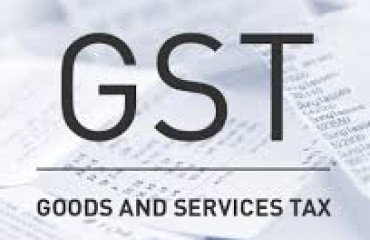
A five-year constitutionally-guaranteed compensation to states to ensure a compound annual growth rate of 14% in revenues under the Goods and Services Tax (GST) regime came to an end on Thursday, leaving several states in dire need of funds. An attempt to get a last-minute extension at the GST Council meeting earlier this week by representatives of as many as 12 states did not yield the desired results, at least for now.
A five-year constitutionally-guaranteed compensation to states to ensure a compound annual growth rate of 14% in revenues under the Goods and Services Tax (GST) regime came to an end on Thursday, leaving several states in dire need of funds. An attempt to get a last-minute extension at the GST Council meeting earlier this week by representatives of as many as 12 states did not yield the desired results, at least for now.
The jury is still out on whether the assurance of 14% revenue growth was a lucrative one to get states on board with the new indirect tax regime or a desired one to keep the finances of states healthy. However, with the compensation era coming to an end, states will have to be prepared to look for other sources of revenue.
GST rate hikes to boost tax collection can also be an option, but it is not desirable amid high inflation, economists said.
For as many as 13 states, more than a quarter of the guaranteed revenue under the new regime came exclusively from compensation between 2018-19 and 2020-21, according to an analysis by PRS Legislative Research. Punjab had the highest dependence on compensation, with 47% of its guaranteed revenue coming from this mode. Goa, Uttarakhand, Delhi, and Himachal Pradesh were also among the top five states heavily dependent on compensation. "We believe the average GST rate will need to rise after the guaranteed compensation period ends in June, but the increase should be accompanied by further simplification and widening of the tax net," Barclays said in a recent note. The GST Council this week raised tax rates on several goods and services.
However, raising the tax rate against the backdrop of high inflation should be done without causing unintended consequences either through raising the rate for items in the 12-18% bucket or expanding the list of goods and services under GST or by removing exemptions, it said.
Raising GST rates can also be a complex process as it will have to be done by the GST Council, leaving little autonomy for states.
""The fiscal stress and cash flow situation varies across the states considerably post pandemic, as the five year transition period ends. It's a toss-up between extending compensation for all states versus doing some state-specific measures, which may not be universally popular, versus letting the states with a higher dependence on GST compensation chart their own path," said Aditi Nayar, chief economist at ICRA.
States can look for non-GST revenue streams such as estate duties or fuel tax. However, a recent article, titled 'State Finances: A Risk Analysis', by the Reserve Bank of India noted that non-tax revenue has been volatile, dropping significantly in recent years. The article also noted that the fiscal conditions among states are showing warning signs of increasing stress, with a slowdown in own tax revenue, high share of committed expenditure, and high debt. Punjab, Rajasthan, Kerala, West Bengal, Bihar, Andhra, Jharkhand, Madhya Pradesh, Uttar Pradesh, and Haryana turn out to be the states with the highest debt burden, the article said. Several states demanded an extension in compensation and finance minister Nirmala Sitharaman said she had heard their request. A final decision is likely in August.
"I think GST has not yet stabilized and, until the time it stabilizes, there should be an assurance of about 8-10%, not 14%, (annual revenue growth) to incentivize the states to implement reforms and boost revenues," said M. Govinda Rao, who served as a member of the 14th finance commission.
